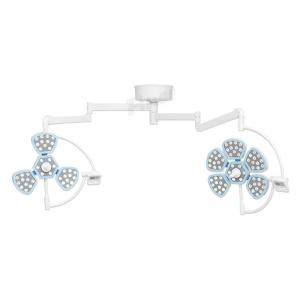
Add to Cart
| Type | Dental LED Surgical Light with Camera |
| Power source | Electricity |
| Power supply | DC 15-24V |
| Colors | White |
| Illumination | 30,000-160,000Lux |
| Spot size | Diameter 120mm (distance for 900mm) |
| Number of LED | 20-35 pieces |
| Color temperature | 4,000-5,500k |
| Light source | LED light |
| Feature | Removable |
| Aplication | Dental surgery illumination |
| Warranty | Three years |
Here are some key features and aspects of a dental operating light:
Brightness and color temperature: Dental lights are typically designed to produce bright light with high color rendering index (CRI) to accurately represent the colors of the patient's teeth and oral tissues. The color temperature is usually in the range of 5,500 to 6,500 Kelvin, providing a cool white light.
Adjustable intensity and focus: Dental operating lights often offer adjustable intensity levels to control the brightness of the light, allowing dentists to customize the illumination according to their preferences and specific procedures. Some lights also have adjustable focus options to concentrate the light beam on the desired area.
Shadow-free illumination: Dental lights are designed to minimize shadows and provide uniform lighting. They may incorporate features like multiple light sources or special reflectors to reduce shadows caused by the dentist's or patient's head movements.
Mobility and positioning: Dental operating lights are typically mounted on a flexible arm or ceiling-mounted track system, allowing easy maneuverability and positioning of the light. Dentists can adjust the light's position and angle to illuminate the specific area they are working on.
Sterilization and hygiene: Dental lights are designed for easy cleaning and disinfection due to the importance of maintaining a sterile environment in dental clinics. They often have smooth surfaces and removable light covers that can be cleaned with disinfectants.
Additional features: Some dental operating lights may include additional features such as touchless controls (using motion sensors or foot pedals) to adjust the light without the need for direct contact, integrated cameras for documentation or communication purposes, or even curing capabilities for polymerization of dental materials.






